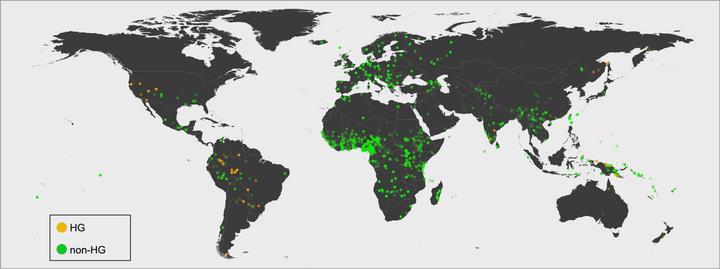 Image credit: Scientific Reports
Image credit: Scientific Reports
Abstract
We test the hypothesis that a specific anatomical feature, the dental malocclusion associated with reduced dental wear, causes languages to adapt by relying more heavily on labiodental consonants. In contrast to previous work on this topic, we adopt a usage-based approach that directly examines the relative frequency of such labiodental sounds within phonetically transcribed word lists and texts from thousands of languages. Labiodentals are shown to be very infrequent in the languages of hunter gatherers, who tend to have edge-to-edge bites as opposed to the overbite and overjet observed in populations that consume softer diets and rely heavily on eating utensils. This strong tendency is evident after controlling for Galton’s problem via multiple methods including frequentist and Bayesian linear mixed modeling. Additionally, we discuss data from Amazonian hunter gatherers with edge-to-edge bites. The languages of these populations are shown not to use labiodentals frequently, or to have only recently begun doing so. Finally, we analyze the speech of English speakers with varying bite types, demonstrating how the sounds used by individuals reflect the same phenomenon. The diverse findings converge on the same conclusion: speech adapts to anatomical differences within and across populations.